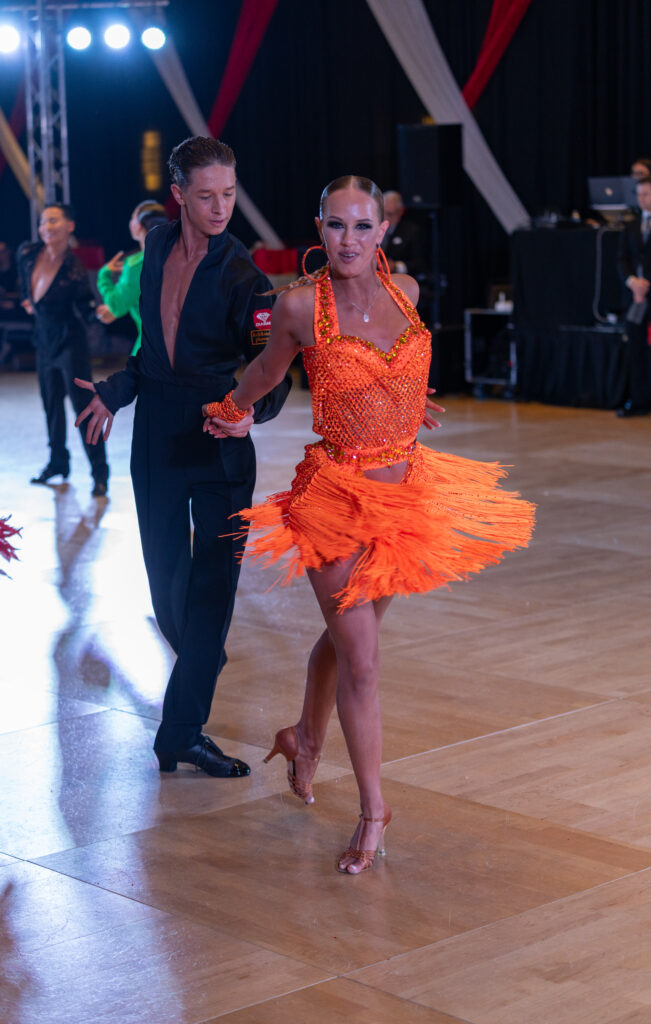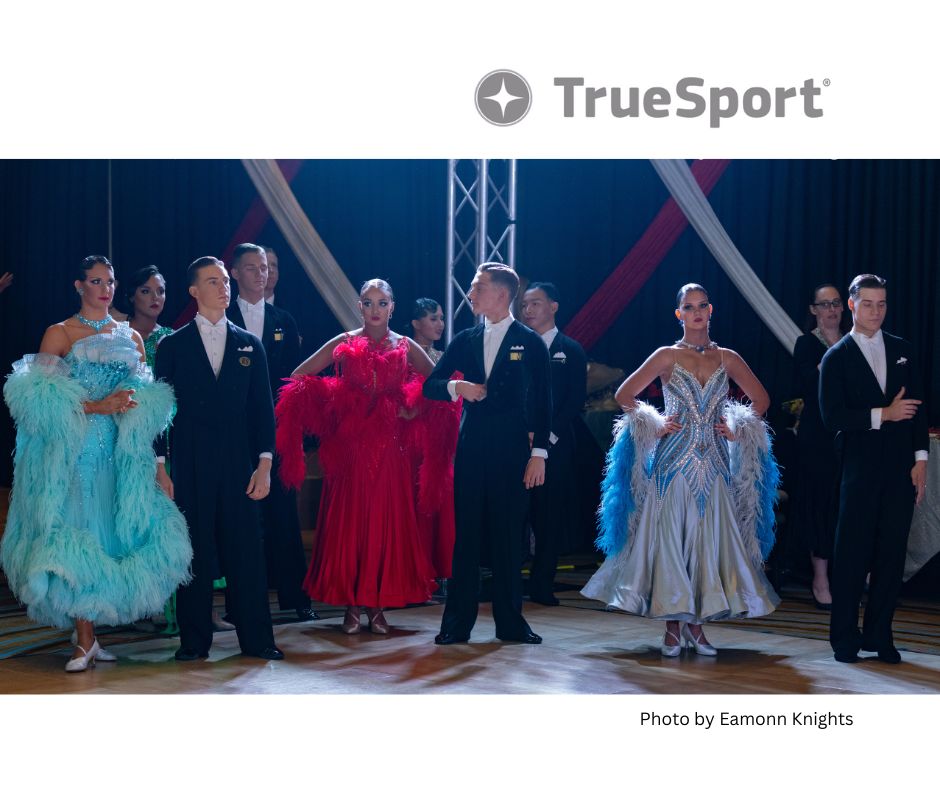The headlines of wellness, fitness, and nutrition coverage have been shouting about the difference in fueling for males versus females in recent years, and as a caregiver for a young athlete, it can feel confusing. There are already so many other aspects of fueling to consider, but if your athlete has big goals, it’s tempting to look for any nutritional edge.
However, many of the sex-based fueling considerations that are making headlines are focused on an older audience, not athletes who have yet to or are currently going through puberty. Here, TrueSport Expert Stephanie Miezin, MS, RD, CSSD, the Director of Nutrition for the NWSL team, KC Current, is dispelling myths around nutrition guidance for male and female athletes, as well as helping caregivers assess what really matters and what nutritional shifts are worth trying.

Nutrition, as Miezin points out, should not be based on gender norms. In fact, many of the stereotypes around gender norms—like those around girls’ bodies needing to be ‘smaller’ or boys needing to be more muscular—are incredibly damaging to an athlete’s health and body image. And trying to use nutrition to fit into those stereotypes can be dangerous.
Instead, nutrition for males and females, especially in adolescence, largely differs due to size, rate of growth, specific training demands, and the sport that they play. Being biologically female or biologically male should only be one of many considerations as you help your athletes fuel. Feedback cues such as hunger, feeling satisfied after eating, mood, energy levels, and ability to recover from training should be considered to be more important than any sex-specific guidelines when determining if an athlete is fueling enough.
In popular nutrition/diet/wellness culture today, there’s a strong emphasis on fueling based on hormonal fluctuations, and the difference between male and female biology when it comes to exercise and nutrition. While these topics are valid and potentially more important for an older population, such as perimenopausal women, we know that the difference in nutrient needs between younger males and females is fairly minor, explains Miezin.
What research has shown is that general recommendations for macronutrient (fat, protein, and carbohydrate) intake are similar from a ratio perspective for young male and female athletes. The main difference, Miezin says, is that overall energy needs—total caloric intake—may differ between male and female athletes, but this is primarily based on size and body composition.
“Those adolescent years during puberty are where overall body size and muscle mass is increasing, so athletes really do need higher intakes,” Miezin explains. (You may recall feeling hungry constantly when you were in the midst of a growth spurt as a teen—that’s a very real feeling.)
Before puberty, male and female children are considered to have the same nutrition requirements per the Dietary Guidelines for Americans. It’s when puberty starts that hormonal differences between males and females begin to create greater differences in body composition and size between the sexes. Nutrition should respond to those changes to ensure proper growth, general health, and fueling performance.

Under the current recommendations, females ages 9-13 require 1,400 to 2,200 calories per day while males require 1,600 to 2,600. For ages 14-18, females require 1,800 to 2,400 calories per day while males require 2,000 to 3,200 calories.
The reason there are different recommendations for male and female adolescents primarily comes down to size. “Typically, males have larger bodies with more muscle mass compared to females,” Miezin explains. “There are also slightly absolute higher energy expenditure levels—meaning a higher caloric burn—for males at the same level of physical activity, but that is because of that difference in body size.”
While it’s true that in general, young male athletes will be heavier than their similarly aged female counterparts, that’s not always the case, especially in early adolescence when females are more likely to go through puberty and the growth that comes with it ahead of males. And at any age, some females will simply be taller and larger than other female athletes or even some male athletes, depending on genetics and bone structure. In these cases, their caloric intake should be increased accordingly.
“If a female athlete is taller or larger than her teammates, it’s likely that she is going to need more food than her smaller-sized peers,” says Miezin. “I see this all the time with athletes I work with. The female athletes that are in larger bodies have higher energy needs, and that’s the same situation for males. Bigger bodies require larger amounts of energy to maintain, fuel, and recover.”
The only other difference for young females who are menstruating (who have their period regularly) is a need for greater iron intake due to blood loss with menstruation, Miezin says. Up to 13 years of age, males and females have the same daily iron requirements. Recommendations change at 14 years of age, reflecting the common or expected age for a female to start menstrual cycles. From 14-18 years old, males should aim for an intake of 11mg of iron daily while females should aim for 15mg iron daily.
Supplementing with iron without testing for a deficiency isn’t recommended. But a caregiver can make sure that female athletes who have started menstrual cycles are frequently including iron-rich foods in their diet, such as red meat, dark leafy greens, and a variety of nuts and seeds.
 How much food an athlete needs also depends on the type of sport that they’re playing. Male athletes are more likely to play high-contact sports like football, says Miezin, and in those sports, the athlete may have a higher resting metabolic rate in the days after a collision-heavy competition (burning more calories even at rest) based on initial research. “But that difference isn’t necessarily about whether the athlete is male or female,” Miezin says. “The research in this area focuses on males, but that doesn’t mean we wouldn’t expect to see similar effects in females.”
How much food an athlete needs also depends on the type of sport that they’re playing. Male athletes are more likely to play high-contact sports like football, says Miezin, and in those sports, the athlete may have a higher resting metabolic rate in the days after a collision-heavy competition (burning more calories even at rest) based on initial research. “But that difference isn’t necessarily about whether the athlete is male or female,” Miezin says. “The research in this area focuses on males, but that doesn’t mean we wouldn’t expect to see similar effects in females.”
It’s extremely important for parents of female athletes to not overly focus on the lower recommended intake compared to their male counterparts, Miezin adds. “It can be easy for this conversation that should be mostly about needing to eat more based on height, weight, and training to turn into a conversation about what a female ‘should’ look like, and that’s what we need to avoid,” she says. Generally, it’s best for caregivers to have this information but not call it out: Simply use the fact that males will usually need more than females as a guide when thinking about portions, but also realize that’s not always the case.
What does this look like practically? If you have a 14-year-old female cross-country runner and an 18-year-old male basketball player, their serving sizes and caloric intake should first be based on their activity levels that day, and then based on their relative body sizes. “If you have a cross-country runner who is back from a long, hard practice, they would likely have higher energy needs than someone who is doing less work in a light basketball practice that day,” says Miezin. “But if the basketball player is a foot taller, he’ll probably need more calories from a size perspective.”
How do you know if your athlete is fueling enough? Growth charts are a simple benchmark to start with. “In addition to the athlete’s sex and sport, we also want to be aware of growth trends throughout adolescence to make sure they’re staying within healthy ranges,” says Miezin. “That’s going to help us in better understanding if overall energy needs are being met. But also tune into their energy levels, their mood, and their performance in the sport. Are they happy? Are they generally healthy? Do they have energy? These are important markers we need to pay attention to. There’s no magic formula for male versus female athletes, as nutrition needs are so individual and based on dozens of factors.”
Takeaway
While there are some subtle differences in fueling strategy for male and female athletes, adolescent athletes should generally focus on fueling based on healthy nutrition principles, body size, and activity level.
About TrueSport
TrueSport®, a movement powered by the experience and values of the U.S. Anti-Doping Agency, champions the positive values and life lessons learned through youth sport. Backed by U.S. Congressional mandate, TrueSport inspires athletes, coaches, parents, and administrators to change the culture of youth sport through active engagement and thoughtful curriculum based on cornerstone lessons of sportsmanship, character-building, and clean and healthy performance, while also creating leaders across communities through sport.
For more expert-driven articles and materials, visit TrueSport’s comprehensive collection of resources.
This content was reproduced in partnership with TrueSport. Any content copied or reproduced without TrueSport and the U.S. Anti-Doping Agency’s express written permission would be in violation of our copyright, and subject to legal recourse. To learn more or request permission to reproduce content, click here.






















